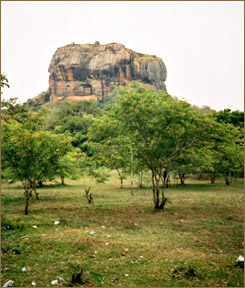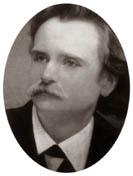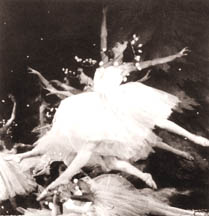|
DAILY NEWS ONLINE |
|
|
|
OTHER EDITIONS |
|
|
|
|
|
|
|
|
|
OTHER LINKS |
|
|
|
|
|
|
  |
|
Was Sigiriya a Mahayana Pabbata Vihara?
|
|
|
As good as any other well-known composer, Edvard Greig had been under-played by most recording companies and in concert halls. A genius of a composer, Greig descended from the line of Greig who settled in Bergen in the mid 18th century.
He was known as Greig but once he had established himself at Bergen and twice married two Norwegian girls, he changed his name to Greig to the convenience of Norwegians and rose to be the Consul for Britain. Edvard Greig was his great-grandson and by the time he was born, the Greigs had become a prosperous and well-to-do clan. They also became closely involved in the performing arts of Bergen, patronising and participating in classical musical events.
It was in this highly credible atmosphere that Greig was born on 15th June 1843. During those formative years, it was an accepted notion that many famous composers cut their first teeth under parental guidance. So, Greig was no exception when he had his first piano lessons from his mother. She was an accomplished pianist and a soprano too.
|
|
Thereafter, his parents were persuaded by the Norwegian violinist, Ole Bull to send Greig across to Lipzig to commence his musical studies. Here, he suffered a setback due to ill-health and also to his horror he discovered the syllabus at the Conservatoire platonic and dull. They never gave him the impetus he was looking forward to.
Then the happy break came his way to work in Copenhagen under the Danish Romantic composer, Niels Gale (1817-1890). He found Gale highly influenced by the works of Rokard Nordraak and Mendelssohn who was the composer of the National Anthem of Norway. Mendelssohn became a close friend of Greig and came to appreciate the finer points of rural life, folk songs as well as the rhythms of the native dances.
This was something he had never cared to appreciate nor noticed before. He found his personal idiom as a composer in their strong and vibrant music which he used in his later scores. He set his mind and succeeded in creating an Independent Norwegian School of Music along with Nordraak and while this was taking shape, Greig received the sad news of the death of his close friend, Nordraak who was writing their score in Rome.
This was a blow that left Greig shattered and many of his friends feared for the life of Greig because of the trauma it had on him. Much time was taken for him to recover and when Greig was prepared to leave behind the shattered memories, he returned to Scandinavia to resume his work; though on a sombre note. His music was less vibrant and melancholy.
He decided to marry again and this time it was his cousin Nina Hegerup who was an established soprano and with whom he had frolicked around in their younger days during the idyllic years at Copenhagen. Pleasantly, the marriage was to prove a great success and they formed a lifelong musical partnership that spanned over forty years.
Greig found it a pleasure to work with his high talented wife and he went easy on his Romantic scores as she inspired interpreted them to perfection. He had only to run his fingers across the bars and there she was humming score. They travelled together throughout Europe, giving concerts and many classical symphonic recitals.
Greig became a national figure owing to his tireless work that involved arranging concerts, scripting new notes with Norwegian identity, conducting symphonic orchestras as well as teaching and examining seniors, undertaking foreign tours and done with his wife.
His endless dedication to classical music was admired by other composers such as Liszt, Brahm, Tchaikovsky etc. They all met him in person and showered their appreciation upon him and Greig being the unspoilt and humane, was described by all as a charming man with a clear conception of music in his heart. As years went by, he met yet another crop of composers, this time the young ones on their way up on whom he had made a deep impression. They were none other than Sibelius, Neilsen, Dellus and Percy Granger.
Luckily Greig's music had not been hyped by recording companies for commercial gains and he remained above hacked treatment. Like Tchaikovsky, years had to pass to appreciate the deep meaning of his spectacular scoring. Yet, one of his minor sonatas was played at classical concerts with his wife rendering soprano.
This piece was first performed at Copenhagen on 2 April, 1869. The lyrical quality and the spontaneous rendering, enchanted the audience and continue to do so even today. This delighted Greig who by nature was a humble man in glory or achievement. He was a composer who allowed his own melodies to take shape which led his scores to possess a close affinity. He scored heavily for folk songs and dance and became the Norwegian National composer to be firmly rooted on his soil.
Some of Greig's scores were used by choreographers in excerpts for ballet because of the Romantic style and songs but mostly confined to classics.
He had also set music to some German poems and its inventiveness and clarity braced the poets to gain recognition who earlier were not known. But much is left to discover in Greig's music and those who dare to explore the neglected aspect of this great composer's repertoire, will certainly come up with magnificants rewards for their research.
Some of Greig's scores
Siguard Joselfar
Peer Cynt
Holberg Suites
Olav Trygvason (Opera)
Norwegin Dances
Piano Concerto in A minor
|
|

 In 1950, Commissioner Senerat Paranavitana in a lecture to the Local
Royal Asiatic Society, showed that strategetically Sigiriya would have
been a hopeless fortress.
In 1950, Commissioner Senerat Paranavitana in a lecture to the Local
Royal Asiatic Society, showed that strategetically Sigiriya would have
been a hopeless fortress. 

